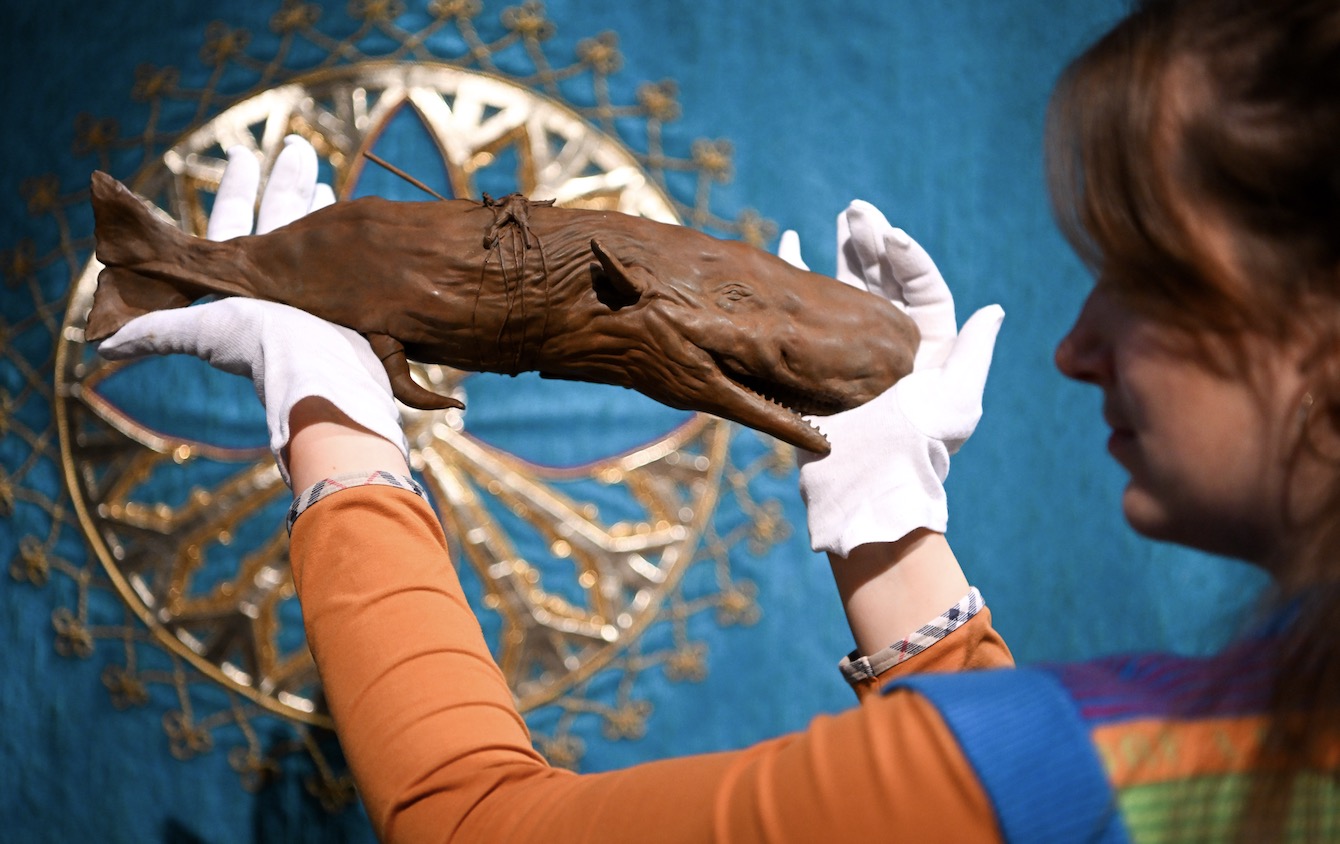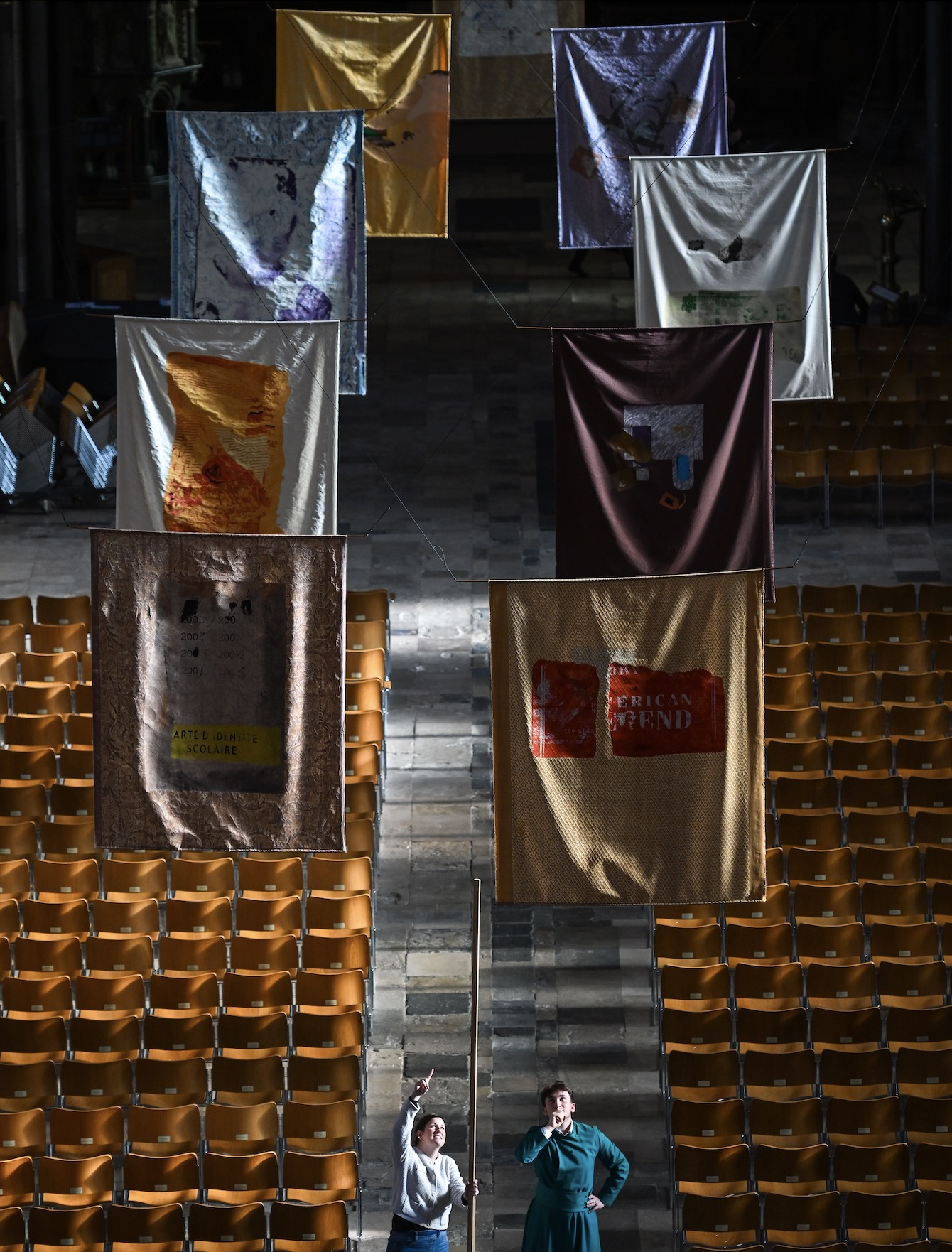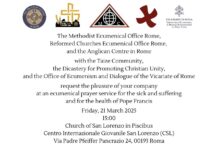Leviathan – exploring our interconnectedness with each other and this fragile planet.
Leviathan features work from artist Shezad Dawood’s wider project of the same name. Central to the exhibition is a series of powerfully affecting textile paintings from the Labanof Cycle, 2017, which feature objects recovered from the seabed by a team from the Laboratory of Anthropological Forensics (LABANOF) at the University of Milan.
These forensic anthropologists go out with UN rescue teams to retrieve and catalogue personal possessions found after a refugee ship has foundered. Ranging from a pinch of earth wrapped in a twist of cling film to a passport and a faded photograph, the artworks are a tribute to lives lost and those that were saved.
The paintings also offer Salisbury Cathedral visitors a chance to reflect not just on the modern crisis, but also the story from Matthew’s Gospel in which Jesus and his family flee Egypt to escape King Herod’s slaughter of the innocents.
In the Chapter House Where do we go now?, 2017, a polychromatic painted sculpture inspired by the engravings and illustrations from Jonathan Swift’s 1704 pamphlet on the nature of legitimate government, depicts sailors in a small boat encountering a whale. The whale represents the State, which threatens to destroy the vessel, prompting the sailors to throw a barrel (or ‘tub’) representing their labour (or ‘capital’) overboard to distract it.
Placed within the 1215 Magna Carta exhibition space, Where do we go now? prompts visitors to consider the legacy of the Magna Carta and the rights and freedoms of refugees, referenced in interpretation and a display that features UNHCR, the UN Refugee Agency.
In the Audley Chapel a small sculpture of a whale, Leviathan, 2017, uses the central allegory of Herman Melville’s Moby Dick to encapsulate the tension between humans and nature.

Inspired by images from John Huston’s film adaptation, the sculpture discusses the challenging relationship between humans and the sea, ecologically, physically and philosophically.
Other works include two short films from Dawood’s 10-part Leviathan Cycle, 2017-ongoing, a series of videos set in a future world following a cataclysmic solar event.
Episode 7: Africana, Ken Bugul & Nemo, 2022 and Episode 8: Cris, Sandra, Papa & Yasmine, 2023 take the viewer on a journey through the Mangroves of Senegal and the Atlantic Forest in Brazil respectively, blending fact and speculative fiction, narrative, indigenous knowledge, and documentary.
Written from the point of view of recurring characters Nemo and Yasmine, the films explore how all beings and the earth are connected, and look beyond the environmental, physical and psychological challenges we currently face to consider new strategies for working and living together.
In the North Transept AnthropoPangaea (Hapalochlaena lunulata), 2022, a large textile work, depicts a map of the world that draws the viewer back in geological time to a point when there was a supercontinent, Pangaea, surrounded by a global ocean, Panthalassa. Hand-painted by Dawood, with rug-hooking and tufting crafted by artisans from Fogo Island off Newfoundland, the map is embraced by a highly venomous blue-ringed octopus, a portent of things to come.

Beth Hughes, Salisbury Cathedral’s Visual Arts Curator curated the exhibition and she said:
“Shezad’s exhibition is a powerful reminder of how we are all connected to each other and to the natural world.
“Dawood is an exceptional artist; the beauty of his work draws you in to explore some of the big questions facing humanity today.
“As we come to the end of 2023 and think about the coming new year and further into the future, this exhibition focuses the mind to help us think about how we might be part of the solution, to make a better world for ourselves, our loved ones and all of humanity.”
The artist, Shezad Dawood, said:
“This is such an exciting opportunity to bring some of the key questions I’ve been asking of climate, migration and our shared humanity into as rich and relevant a setting as Salisbury Cathedral. And to place my work in dialogue with one of the original copies of the Magna Carta, and its legacy in terms of renegotiating the social charter, at a time when a renewed sense of sharing and purpose is urgently needed.”
Kenneth Padley, Canon Treasurer and Chair of the Cathedral’s Arts Advisory said:
“This exhibition is a timely reminder, amid the anticipation and excitement of Advent and Christmas, that Jesus and his family were refugees and were being persecuted. It also heralds the Cathedral’s 2024 exhibition, Our Earth, which will address the climate challenge and how we are impacting this planet. The overriding message is a call to action before it is too late.”
Leviathan runs until 4 Feb 2024. The exhibition is free with Cathedral admission.



